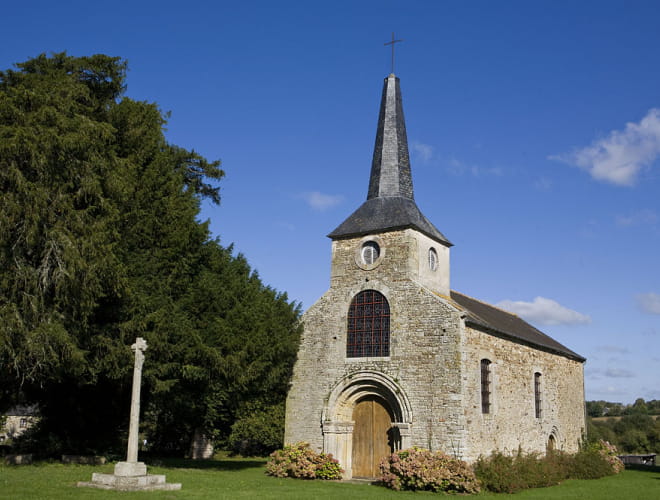About us
It is a parish enclosure, that is to say an enclosed space entirely dedicated to the saint (cemetery, place of worship) within which grows a thousand-year-old yew (the yew being the mythical tree of the Celts "idad ")
On the facade, there are elements of a Roman villa (evocation of the penate gods who protect the house), a symbol of the family (escutcheon), a sign of fertility (vagina and penis).
The classified 12th century baptismal font has 4 handles symbolizing the 4 cardinal points in the shape of heads. The interior grooves date from the year one thousand.
Beneath the flesh is a recently raised well.
There is a Templar crest in the ground (palm leaf, sign of Christians).
The church has kept the conviviality of the churches of yesteryear. It can hold 200 people.
Why Saint Lunaire in Saint Lormel?
The two names have the same origin: that of a Welsh missionary monk (born in 509) named Léonor and whose grandfather was at the head of Domnonée.
“lor” would be the contraction of Léonor and “Mel” of crowned saint. This monk arrives in France and founds a monastery near what will later be Dinard (with Samson, Tugdual,...). He founded the first Christian community in the area on this site. He was then one of the many sons of exiles who returned to the country (besides his brother Hoël would also return there to reconquer his father's kingdom.) and spread the Catholic religion there. Indeed, leaving from Rome, Catholicism will spread in Europe by following the natural communication channels: the Rhône, the Saône then the Rhine before landing on the island of England. The barbarian invasions of the Angles and Saxons in the 6th century will reject converts towards the Irish, Scottish and Breton margins. Like a boomerang, this religion therefore developed towards the north before returning by an accident of history towards the south and spreading to the rest of our country.
The first church appears in the 7th century erected on the remains of a Celtic temple of the 2nd century BC. It was demolished and then rebuilt in the year 1000, and again in the 15th and 16th centuries in its present form except for the thatched roof which covered it then (roofing stone).
In the 300th century, the pope, noting the extent of the cult dedicated to Saint Lunar, conceded by a papal bull the plenary indulgence for 1 years, more specifically for the date of forgiveness on the XNUMXst Sunday of July.
The displacement of the village took place in 1863 with the construction of a new and high church. The appearance of the name "old town" came gradually. That of “chapel” followed; it must nevertheless keep the name of church.
The history of the place did not begin with Léonor who gave its name to the place, but long before. There are indeed many Roman traces, in particular certain stones of the facade which come from a family villa located here. We know with certainty that the “Grand trait” and “la Louverie” housed Roman garrisons detached to protect Fanum Martis, temple of the coriosolites. For lovers of the Roman world or simply curious, Corseul 5 km away has real treasures from Roman times that passionate volunteers can help you discover.
In the 2nd century, a great people of Celtic fishermen inhabited this meander. Of an animist druidic religion, they settled at the edge of springs. Traces of bones were found in the well and under the stele during the interior renovation of the church carried out in 1984-1985 as well as on the square of the town hall of Plancoët.
parish close and thousand-year-old yews
Contact
The Old Town
22130 Saint-Lormel



